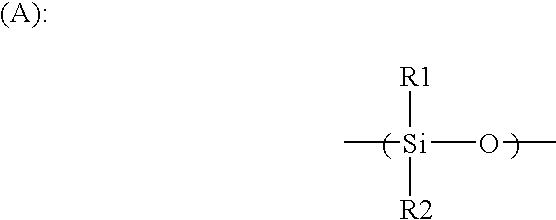Photoelectric conversion device and manufacturing process thereof
a technology of photoelectric conversion and manufacturing process, which is applied in the direction of semiconductor/solid-state device details, radiation controlled devices, final product manufacturing, etc., can solve the problems of reducing the advantage of using crystalline semiconductor particles, unable to maintain the structure, and difficult to deposit semiconductor particles with less than 0.2 mm particle sizes on the substra
- Summary
- Abstract
- Description
- Claims
- Application Information
AI Technical Summary
Benefits of technology
Problems solved by technology
Method used
Image
Examples
example 1-1
[0085] A 50 .mu.m thick aluminum alloy was attached onto a stainless steel base by cold welding so as to form a substrate 1. Then, a joining-aide layer was formed such that a butyral resin dissolved in an organic solvent was applied to the substrate 1 to a thickness of 50 .mu.m by using the doctor blade technique. On top of the layer, p-type silicon particles 2 having diameters of 0.3-0.5 mm were deposited several times so that the p-type silicon particles 2 were adequately bonded to the joining-aid layer, and then extra p-type silicon particles 2 were removed by inclining the substrate 1. Thereafter, with the p-type silicon particles 2 being kept pressed and still by application of a constant load, heat at a temperature of 630.degree.C. was applied for 10 minutes in atmospheric air so as to join the p-type silicon particles 2 to the aluminum alloy.
[0086] A fluorine-containing liquid repellant agent was applied onto the sample and dried at room temperature. Thereafter, a solution pr...
example 1-2
[0092] A 50 .mu.m thick aluminum alloy was attached onto a stainless steel base by cold welding so as to form a substrate 1. Then, a joining-aide layer was formed such that a butyral resin dissolved in an organic solvent was applied to the substrate 1 to a thickness of 50 .mu.m by using the doctor blade technique. On top of the layer, p-type silicon particles 2 having diameters of 0.3-0.5 mm were deposited several times so that the p-type silicon particles 2 were adequately bonded to the joining-aid layer, and then extra p-type silicon particles 2 were removed by inclining the substrate 1. Thereafter, with the p-type silicon particles 2 being kept pressed and still by application of a constant load, heat at a temperature of 630.degree.C. was applied for 10 minutes in atmospheric air so as to join the p-type silicon particles 2 to the aluminum alloy.
[0093] A fluorine-containing liquid repellant agent was applied onto the sample and dried at room temperature. Thereafter, a solution pr...
example 1-3
[0101] A 50 .mu.m thick aluminum alloy was attached onto a stainless steel base by cold welding so as to form a substrate 1. Then, a joining-aide layer was formed such that a butyral resin dissolved in an organic solvent was applied to the substrate 1 to a thickness of 50 .mu.m by using the doctor blade technique. On top of the layer, p-type silicon particles 2 having diameters of 0.3-0.5 mm were deposited several times so that the p-type silicon particles 2 were adequately bonded to the joining-aid layer, and then extra p-type silicon particles 2 were removed by inclining the substrate 1. Thereafter, with the p-type silicon particles 2 being kept pressed and still by application of a constant load, heat at a temperature of 630.degree.C. was applied for 10 minutes in atmospheric air so as to join the p-type silicon particles 2 to the aluminum alloy.
[0102] A fluorine-containing liquid repellant agent was applied onto the sample and dried at room temperature. A solution of a hydrolyza...
PUM
 Login to View More
Login to View More Abstract
Description
Claims
Application Information
 Login to View More
Login to View More - R&D
- Intellectual Property
- Life Sciences
- Materials
- Tech Scout
- Unparalleled Data Quality
- Higher Quality Content
- 60% Fewer Hallucinations
Browse by: Latest US Patents, China's latest patents, Technical Efficacy Thesaurus, Application Domain, Technology Topic, Popular Technical Reports.
© 2025 PatSnap. All rights reserved.Legal|Privacy policy|Modern Slavery Act Transparency Statement|Sitemap|About US| Contact US: help@patsnap.com



